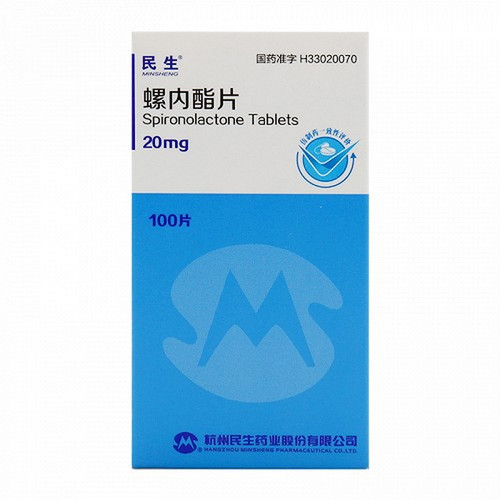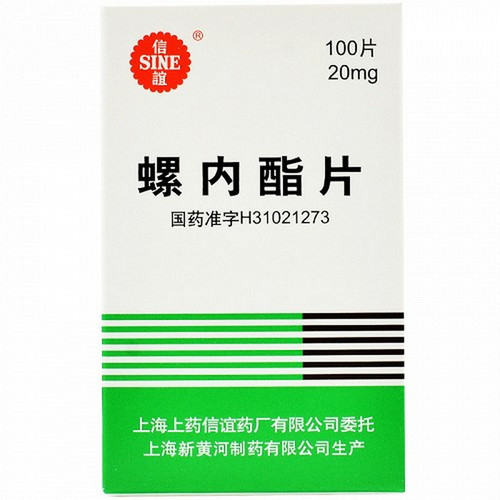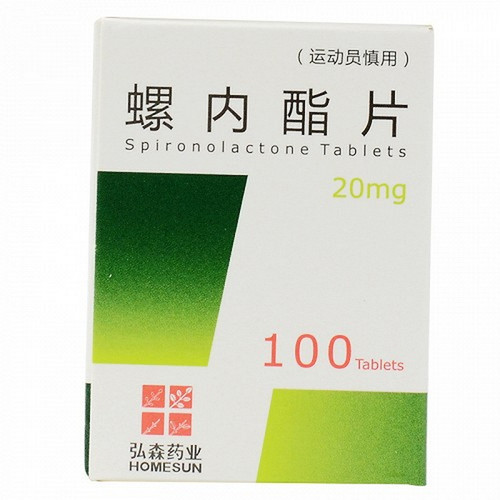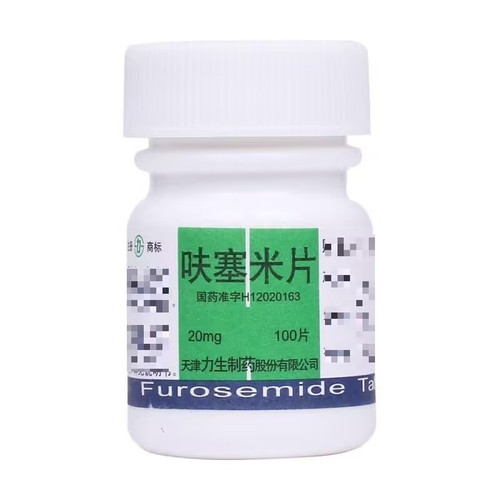Product Overview
[Drug Name]
Generic Name: Spironolactone Tablets
Trade Name: Shengdi Spironolactone Tablets 20mg*100 Tablets
Pinyin Full Code: ShengDi LuoNeiZuoPian 20mg*100Pian
[Main Ingredient]
Spironolactone.
[Properties]
This product is a white tablet.
[Indications/Main Functions]
(1) Edema diseases: Used in combination with other diuretics to treat edema diseases such as congestive edema, ascites due to cirrhosis, and renal edema. The purpose is to correct the secondary increased aldosterone secretion associated with the above diseases and to counteract the potassium excretion effect of other diuretics. It is also used to treat idiopathic edema. (2) Hypertension: As an auxiliary drug for the treatment of hypertension. (3) Primary aldosteronism: Spironolactone can be used for the diagnosis and treatment of this disease. (4) Prevention of hypokalemia: Used in combination with thiazide diuretics to enhance the diuretic effect and prevent hypokalemia.
【Precautions】
1) Use with caution in the following situations: ① Anuria; ② Renal insufficiency; ③ Hepatic insufficiency, as electrolyte imbalance caused by this drug may induce hepatic coma; ④ Hyponatremia; ⑤ Acidosis, on the one hand, acidosis may aggravate or trigger hyperkalemia caused by this drug, and on the other hand, this drug may aggravate acidosis; ⑥ Those with breast enlargement or menstrual disorders. (2) Dosing should be individualized and started from the minimum effective dose to reduce the occurrence of side effects such as electrolyte imbalance. If the drug is taken once a day, it should be taken in the morning to avoid increased urination at night. (3) Before taking the drug, the patient's blood potassium concentration should be understood, but in some cases, the blood potassium concentration cannot represent the total potassium content in the body. For example, in acidosis, potassium is transferred from the intracellular to the extracellular and hyperkalemia is likely to occur. After the acidosis is corrected, the blood potassium can decrease. (4) This drug takes effect slowly and lasts for a long time, so the first day's dose can be increased to 2 to 3 times the regular dose, and the dose can be adjusted as appropriate. When used in combination with other diuretics, it can be taken 2 to 3 days before other diuretics. When this drug is added after other diuretics have been used, the dose of other diuretics can be reduced by 50% in the first 2 to 3 days, and the dose can be adjusted as appropriate thereafter. When stopping the drug, this drug should be stopped 2 to 3 days before other diuretics. (5) If hyperkalemia occurs during medication, the drug should be stopped immediately. (6) The drug should be taken with or after meals to reduce gastrointestinal reactions and may increase the bioavailability of this drug. (7) Interference with diagnosis: ① It increases the plasma cortisol concentration determined by the fluorescence method, so this drug should be discontinued 4 to 7 days before blood collection or other determination methods should be used instead; ② It increases the following measurement values: plasma creatinine and urea nitrogen (especially when there is existing renal function impairment), plasma renin, serum magnesium, potassium; urinary calcium excretion may increase, while urinary sodium excretion decreases. (8) Athletes should use with caution.
[Drug Interactions]
It is contraindicated in patients with hyperkalemia.
[Specifications]
20mg*100 tablets
[Dosage and Administration]
1. Adults: ① For the treatment of edema, take 40-120 mg daily in 2-4 divided doses for at least 5 consecutive days. Adjust the dose as needed thereafter. ② For the treatment of hypertension, initially take 40-80 mg daily in divided doses for at least 2 weeks, then adjust the dose as needed thereafter. It should not be used in combination with angiotensin-converting enzyme inhibitors to avoid increasing the risk of hyperkalemia. ③ For the treatment of primary aldosteronism, preoperatively, take 100-400 mg daily in 2-4 divided doses. For patients who are not suitable for surgery, a lower maintenance dose may be used. ④ For the diagnosis of primary aldosteronism, for long-term studies, take 400 mg daily in 2-4 divided doses for 3-4 consecutive weeks. For short-term studies, take 400 mg daily in 2-4 divided doses for 4 consecutive days. Elderly individuals are more sensitive to this drug, so a smaller initial dose is recommended. 2. For the treatment of edematous diseases in children, the initial dose is 1-3 mg/kg per day based on body weight or 30-90 mg/m2 per body surface area, taken as a single dose or divided into 2-4 doses. The dose can be adjusted as appropriate after 5 consecutive days. The maximum dose is 3-9 mg/kg or 90-270 mg/m2 per day.
[Adverse Reactions]
(1) Common ones include: ① Hyperkalemia, which is the most common, especially when used alone, ingesting a high-potassium diet, taking potassium supplements or potassium-containing drugs such as penicillin potassium, and in the presence of renal impairment, oliguria, or anuria; even when used in combination with thiazide diuretics, the incidence of hyperkalemia can still reach 8.6% to 26%, and arrhythmia is often the first manifestation. Therefore, blood potassium and electrocardiogram must be closely monitored during medication; ② Gastrointestinal reactions, such as nausea, vomiting, stomach cramps, and diarrhea; there are also reports of peptic ulcers. (2) Rare symptoms include: ① Hyponatremia, which is rare when used alone but increases in incidence when used in combination with other diuretics; ② Anti-androgen-like effects or effects on other endocrine systems. Long-term use of this drug can cause male breast development, impotence, and sexual dysfunction in men, and breast tenderness, hoarseness, increased hair growth, menstrual disorders, and decreased sexual function in women; ③ Central nervous system manifestations. Long-term or high-dose use of this drug can cause walking incoordination, headaches, etc. (3) Rare symptoms include: ① Allergic reactions, such as rashes and even difficulty breathing; ② Temporary increases in plasma creatinine and urea nitrogen, which are mainly related to excessive diuresis, insufficient effective blood volume, and decreased glomerular filtration rate; ③ Mild hyperchloremic acidosis; ④ Tumors. There are reports of 5 patients who developed breast cancer after long-term use of this drug and hydrochlorothiazide.
[Contraindications]
This drug is contraindicated in patients with hyperkalemia.









